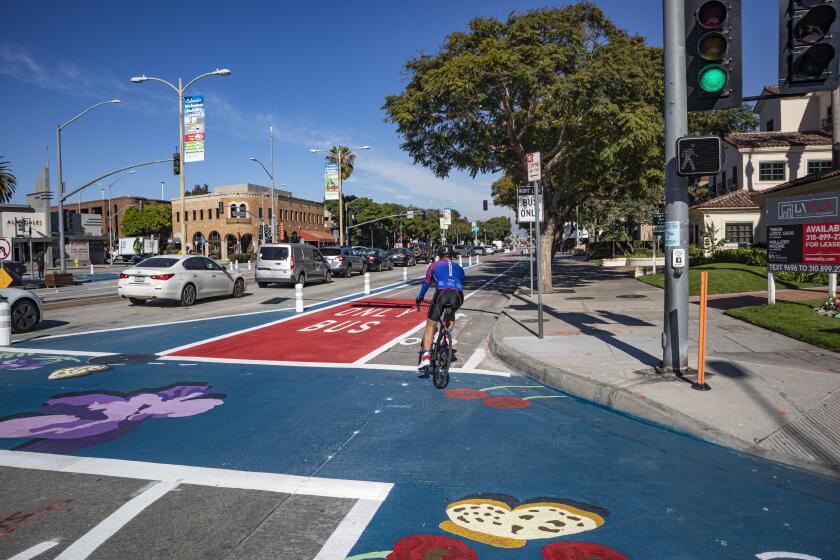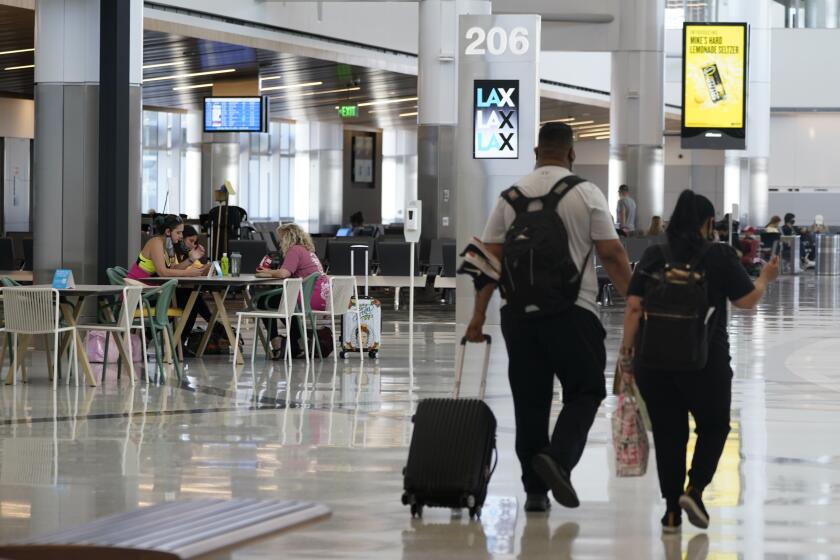Metro Rail Excavation Casts New Light on ‘Old Chinatown’
- Share via
Los Angeles’ long-vanished “Old Chinatown”--razed to make room for Union Station more than half a century ago--is revealing some of its secrets to urban archeologists now poring over a cache of artifacts unearthed during Metro Rail construction.
The finds range from the ordinary to the exquisite: a portable cooking stove; porcelain tea cups, rice bowls and spittoons; a woman’s high-laced leather shoe; rusted Chinese coins; gambling dominoes and opium pipe bowls.
Thousands of objects, left behind 52 years ago when most of Los Angeles’ first Chinatown was bulldozed to make way for the station, are providing experts with a detailed look at the life, habits--even the diets--of early Chinese railroad workers, vegetable peddlers, merchants and their families.
The area excavated represents about one-quarter of Old Chinatown, 12 square blocks whose earliest residents, mostly railroad workers, arrived in the 1870s. In its heyday, the area was a thriving business and residential district inhabited by 3,000 Chinese.
The excavation project--begun last year and set to conclude later this year when all the items are dated and analyzed--will help scholars better understand early Chinese-American history, said William Mason, a curator at the Los Angeles County Museum of Natural History, which may become the artifacts’ permanent home.
The result may be a toppling of popularly held stereotypes: that there were few women in Old Chinatown (most of the early immigrants were thought to be men who didn’t bring their families), that opium-smoking and gambling led to the community’s demise, that everyone who lived there belonged to one socioeconomic class.
“Where often it is said there were no women in Chinatown, we have proven that’s not true,” said Roberta S. Greenwood, an urban archeologist whose firm won a $240,945 contract from the Southern California Rapid Transit District to monitor digs for artifacts uprooted by Metro Rail construction. “We found women’s jewelry, shoes, beads. Even after the Exclusion Act (an 1882 federal law designed to keep out Chinese immigrants), professionals and merchants were allowed to bring families.”
Mason said that what the archeologists didn’t find is just as interesting as what they did.
Newspaper articles during the area’s heyday in the early 1900s described underground passageways leading from building to building, which the Chinese supposedly would use as opium dens, gambling parlors or hideaways during tong wars--clashes between secretive Chinese associations. But Greenwood said she found no evidence of such tunnels under Union Station, although one has been discovered under a nearby brick building.
Mason believes there never was a massive network of tunnels. He said the newspaper accounts were used as “scare propaganda. People were violently anti-Chinese.”
The artifacts also suggest a diverse social structure in Old Chinatown--”everything from teachers to fortunetellers,” Greenwood said. Most of the jewelry found under Union Station was “imitation jade”--colored glass bracelets and beads made to look like the precious stone that was too expensive for most working-class Chinese.
Yet lying nearby were vases made of fine quality porcelain--some expensively glazed--that more likely belonged to a wealthy merchant.
“It was said that the Chinese community was . . . monolithic,” Greenwood said. “I don’t believe that for a minute. There was quite a range of occupations.”
The discoveries were made when archeologists, using old fire insurance maps as a guide, spent three weeks last year exploring an area east of Alameda Street. Metro Rail work crews at the site had removed 14 feet of soil to begin construction on the first stop of the 17.4-mile Red Line. There, just as expected, were the brick remains of old Chinese settlements, vegetable stalls and open trash pits.
“It is very exciting,” said Suellen Cheng, a Los Angeles historian specializing in Chinese-American history who was consulted during the excavation. “We have been talking about the history, but it was only words. Now we can see the real objects. It’s a much more vivid history with the support of the artifacts.”
Most residents of Old Chinatown lived in cramped quarters--whole families lived in the back of a store, while bachelors crowded into poorly lit boarding houses with little heat or ventilation.
Because of laws preventing Chinese from owning property, most early immigrants paid rent to the family of rancher Juan Apablasa, who owned most of Old Chinatown. By 1913, the family was taking in $4,000 a month from Chinese tenants, according to a June, 1949, account in The Times.
After being displaced by Union Station construction during the 1930s, most Chinese pooled their money, gathered their belongings and resettled a few blocks northwest in the area known today as Chinatown.
Greenwood, who was first hired in 1974 by state and local agencies to excavate Chinatowns and Chinese gold-mining camps in California, said the Union Station discovery is by far the largest she’s come across.
The Old Chinatown finds are not the only discoveries unearthed by Metro Rail digging. Other sites have yielded fossils dating back millions of years, said Bruce Lander, a North Hollywood paleontologist on the project.
The Chinatown collection is being stored temporarily at RTD headquarters, but may be permanently displayed at the Los Angeles County Museum of Natural History or at Metro Rail stations. Meanwhile, Chinese community leaders are pushing for a new Museum of Chinese-American History to house the collection.
News of the excavation of Old Chinatown has traveled quickly through the Chinese community, sparking memories--both painful and pleasant--for some men and women alive during that time.
“We were very isolated,” said David Lee, 71, whose family owned Man Jen Low, a three-story restaurant in Old Chinatown. “We were not able to go to public swimming pools. There was one day when blacks and Asians were allowed.”
But Lee also recalled times when he and other youngsters would hide inside stables where vegetable peddlers kept their horses, carts and produce.
“We’d crawl underneath and steal fruits,” he chuckled. “We wore coveralls with big pockets to put all the fruit in. . . . We had a colony of our own.”
More to Read
Sign up for Essential California
The most important California stories and recommendations in your inbox every morning.
You may occasionally receive promotional content from the Los Angeles Times.










